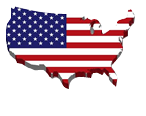Material Safety Data Sheet
MSDS printable version
Section 1 - Product Identification
Product identifier: GLASS
Product code: N/A
Product use: Reinforcements for various resin systems.
Supplier / Manufacturer Name and Address:
ValuTex Reinforcements Inc.
2302 Kenskill Avenue
Washington Court House, Ohio 43160
2302 Kenskill Avenue
Washington Court House, Ohio 43160
Section 2 - Chemical Composition/Hazardous Ingredients
| OSHA | ACGIH | ||||
|---|---|---|---|---|---|
| Ingredients | CAS # | % (weight) | PEL | TLV | |
| Glass, fibrous | N/A | 98-99 | N/A | N/A | |
| Organic polymer solids (cured) | N/A | 1-2 | N/A | ||
Emergency Telephone #: N/A
Section 3 - Hazardous Identification
***POTENTIAL HEALTH EFFECTS***
Primary route(s) of entry: Inhalation
Signs and symptoms of short-term (acute) exposure:
- Inhalation: Harmful if inhaled. Cause throat irritation.
- Skin contact: Mechanical irritation. Typically, skin irritation experienced by most persons newly exposed to fi glass.
- Eye contact: Mechanical irritation.
- Ingestion: Harmful if swallowed. Unlikely route of entry.
Effects of long-term (chronic) exposure: None currently known. See Section 11.
Other important hazards: None.
Section 4 - First Aid Measures
Inhalation:If irritation persists, seek medical attention.
Skin contact: Rinse contact areas with room temperature to cool water, then wash gently with mild soap. If glass fiber becomes embedded, seek medical attention.
Eye contact: Flush eyes with water for at least 15 minutes - seek medical attention.
Ingestion: Seek medical attention
Section 5 - Fire Fighting Measures
Fire hazards/conditions of flammability: Not applicable.
Flash point (Method): N/A
Lower flammable limit (% by volume): N/A Upper flammable limit (% by volume): N/A Explosion data: N/A
- Sensitivity to mechanical impact: None.
- Sensitivity to static discharge: None.
Oxidizing properties: None.
Auto-ignition temperature: None.
Suitable extinguishing media: Water is the preferred extinguishing media.
Special fire-fighting procedures/equipment: In any sustained fire, wear self-contained breathing apparatus (SCB Every company should have written NFPA & OSHA compliant, fire/evacuation policies including training for all facility employees.
Hazardous combustion products: The larger part of the product is non-flammable.
Section 6 - Accidental Release Measures
Personal precautions: Wear protective equipment. Keep airborne dust concentrations below regulated levels. Not electrical conductor. Can accumulate static discharge.
Environmental precautions: Dispose in accordance with government regulations. Keep debris minimal by locating waste disposal equipment near work area.
Spill response/Cleanup: Use vacuuming or wet sweeping methods instead of dry sweeping. Keep airborne concentrations below regulated levels.
Prohibited materials: No data
Section 7 - Handling And Storage
Safe handling procedures: Avoid operations creating dust.
Storage requirements: For optimum performance, store at 25°C or less and relative humidity less than 65%
Incompatible materials: None known.
Special packaging materials: No data.
Section 8 - Exposure Controls and Personal Protection
Ventilation and engineering controls: Local exhaust ventilation (if needed) to minimize airborne dust levels.
Respiratory protection: Some applications of these products may not require respiratory protection for fiber However, if airborne fibrous glass concentrations exceed regulatory limits, respiratory protection approved for nuisance dusts is recommended.
Protective gloves: Recommended.
Eye protection: Safety glasses with side shields if there is a chance of airborne glass fibers contacting eyes.
Other protective equipment: Good personal hygiene and the use of barrier creams, caps, protective gloves, cot coveralls, or long sleeved loose fitting clothing will maximize comfort. Vacuum equipment may be used to remove fibers from clothes. Work clothing should be laundered separately from other clothing before reuse.
Permissible exposure levels: 5 mg/m3 TLV-TWA (ACGIH) for fibrous glass dust, inhalable fraction. NIO recommends an exposure limit of 3.0 fibers/cc for fibers less than 3.5 microns in diameter and length greater than microns.
Section 9 - Physical and Chemical Properties
Physical form, color and odor: White fibers assembled into fabric of varying weights and thickness. No odor.
Odor threshold: None.
pH: Neutral.
Boiling point: >871.1oC (1600oF)
Melting/freezing point: >871.1oC (1600oF)
Vapor pressure: Does not have vapor pressure. Solubility in water: Small
Coefficient of oil/water distribution: None.
Specific gravity or relative density (water = 1): Glass 2.6
Vapor density: Not determined.
Volatile organic compounds (VOC's): Not volatile.
Evaporation rate: N/A
Section 10 - Reactivity and Stability Data
Stability and reactivity: Stable.
Conditions to avoid: None known. Materials to avoid: None known.
Hazardous decomposition products: None known.
Section 11 - Toxicological Information
LD50: N/A
LC50: N/A
Routes of exposure: Inhalation, eye and skin contact.
Factors in fiber toxicity include: fiber dimensions and degree of exposure.
Fiber dimensions: Fibers are either non-respirable or respirable. Respirable fibers can penetrate to the “deep” lung areas. The narrow, bending passages of the human respiratory system, do not permit the relatively larger, non-respirable fiber enter the “deep” lung area. Instead, they strike the surfaces of the upper respiratory tract, nose or pharynx and stop. They may then be filtered by nasal hairs or other natural mechanisms.
Toxicological data: N/A
Carcinogenicity: No adequate data to classify.
Teratogenicity, mutagenicity, other reproductive effects: No adequate data to classify.
Sensitization to material: No data.
Conditions aggravated by exposure: None known.
Synergistic materials: None known
Section 12 - Ecological Information
Important environmental characteristics: Fiber glass is generally considered to be an inert solid waste, and no special precautions should be taken in case it is released or spilled.
Aquatic toxicity: No data.
Section 13 - Waste Disposal
Handling for disposal: Fiber glass is considered non-hazardous per EPA, RCRA, 40CFR, Part 261.1990. Considered inert solid waste. Local, state, and national regulations should be consulted to ensure proper disposal procedures. Fiberglass products which are part of a reinforced plastic or uncured resin system must be disposed of in accordance with applicable requirements for those plastic or uncured resin where they exist. Not regulated by the Department Transportation (DOT.)
Methods of disposal: Non-hazardous
Section 14 - Transportation Information
Transportation of Dangerous Goods (TDG) information:
Shipping description: Not regulated.
49 CFR information:
Shipping description: Not regulated.
International Dangerous Goods information:
IMO: Not regulated.
ICAO: Not regulated.
Other information: None.
Section 15 - Regulatory Information
WHMIS information: Exempt. This product has been classified in accordance with the hazard criteria of the Controlled Products Regulations (CPR) and this MSDS contains all the information required by the CPR.
CEPA information: Exempt.
Section 16 - Other Information
| TSCA information: | Exempt |
|---|---|
| Prepared by: | ValuTex Reinforcements Inc. |
| Telephone number: | (800)-251-2507 |
| Preparation date: | 01/01/18 |

